|
Courage and perseverance are two traits that I admire. The latter is a characteristic that not many people have, is hard to teach, and one that is imperative for success. In my classroom of 2nd graders, I try to remind them to “not give up, but try again and again.” When they become frustrated with challenging work or difficult friendships, they stop wanting to try again. They start to give up - but I tell them, “Keep trying!” and “Don’t be afraid to make a mistake!” Hopefully, one day my students will grow to recognize how courage can help them persevere through anything.
People who do extraordinary things should be recognized for their courage and conviction. Saint Catherine of Siena, whose feast day we celebrated yesterday, is a woman whose contributions to the Church, taking action in times of need and exceptional theological writings, sometimes can be overlooked. Born in Siena, Italy in 1347, Catherine spent her life doing the will of God. She began receiving visions and praying to God from a very early age, even seeing in one in which Christ reassured her with an armor of courage that could overcome anything that tempted or threatened her. St. Catherine lived her entire life in prayer and was named a Doctor of the Church by Pope Paul VI on October 4, 1970. She along with St. Teresa of Avila and St. Therese of Lisieux are the three women to have been bestowed with such a title. St. Catherine worked to return Pope Gregory XI to Rome, from Avignon France where the Papacy had been residing for 67 years. Her determination to see this mission through was a testament to her unwavering courage to do God’s will. In her many philosophical letters, prayers, and the Dialogue, St. Catherine reflected on four theological concepts with which she considered while in ecclesiastical mysticism. The first was a Treatise of Divine Providence, the second was a Treatise of Discretion, third was a Treatise of Prayer, and finally a Treatise of Obedience. Throughout her courageous writings, she discusses the goodness of a person’s knowledge of God and his unending love for his children living on earth. Because of this prayerful life she led, in 1375, St. Catherine was blessed with the Stigmata on her hands, feet, and side. Her wounds reflected those of Christ’s and were only visible to the naked eye upon her death in 1380 at the young age of thirty-three. Found incorrupt in 1430, St. Catherine is now buried under the altar of Santa Maria Sopra Minerva, in Rome and a sculpture of her body is on display there, too. Throughout the year, let us strive to be like St. Catherine of Siena and take courage and persevere. Unshaken by those who challenged and doubted her, she remained steadfast in her commitment to Christ, His Church, and His people. You don’t have to be a saint to follow God’s call to courageous witness, but prayer and perseverance can lead you toward holiness in Christ. **This blog was originally published on April 30, 2015.** **This photo is from: https://ourcatholicradio.org/blog/5-things-you-can-learn-st-catherine-siena**
0 Comments
“Because children have abounding vitality, because they are in spirit fierce and free, therefore they want things repeated and unchanged. They always say, "Do it again"; and the grown-up person does it again until he is nearly dead. For grown-up people are not strong enough to exult in monotony. But perhaps God is strong enough to exult in monotony. It is possible that God says every morning, "Do it again" to the sun; and every evening, "Do it again" to the moon. It may not be automatic necessity that makes all daisies alike; it may be that God makes every daisy separately, but has never got tired of making them. It may be that He has the eternal appetite of infancy; for we have sinned and grown old, and our Father is younger than we.” G.K. Chesterton, Orthodoxy Today on the feast day of St. Therese of Lisieux, affectionately known as the Little Flower, I turn to my sons’ example in accepting everything completely from God. My almost two-year-old is predictable: he loves blueberries, watching the garbage truck pick up trash on Mondays and Fridays, and playing in the backyard. Recently he has taken to playing with a giant cardboard box that my husband engineered into a “cottage” with a window and a workable door. The joy and excitement he exudes each morning playing with his cardboard cottage didn’t strike me at first. But after a few rounds of him serving me imaginary chocolate milk and tea from his little abode, I realized that this joy, the same joy and freedom he has when running ferociously to the front of the house to see the garbage being picked up, is the joy and freedom St. Therese of Lisieux wrote about and emulated in her life. “To remain a child before God means to recognize our nothingness, to expect everything from God. It is not to become discouraged over our failings, for our children fall often, but they themselves are too little to hurt themselves very much.” St. Therese of Lisieux Therese gives us the example of radical abandonment to the Father’s will. When we take a snapshot of her life—where she lived most of her life, whom she met, what accolades she was awarded—we see that her life was not much in worldly standards. And yet, Therese is honored with the title “Doctor of the Church.” Her writings and her example of charity beckon us to take a closer look at this simple and great saint. While Saint Therese is a heavily pestered saint when it comes to intercession (as her intercession is known to be great) and her quotes are seen often, today let us take after her childlikeness and see the world through her eyes with childlike abandonment to God. I encourage you to find five beautiful things in the mundane of your day that your eye has not yet “truly” seen before. Thank and praise God for the life He has given you, in all its sufferings and joys, and ask for St. Therese’s intercession in seeing the beauty in the mundane. For more resources on Marriage and Family, please click here. **This blog was originally published on October 1, 2020.** “Because children have abounding vitality, because they are in spirit fierce and free, therefore they want things repeated and unchanged. They always say, "Do it again"; and the grown-up person does it again until he is nearly dead. For grown-up people are not strong enough to exult in monotony. But perhaps God is strong enough to exult in monotony. It is possible that God says every morning, "Do it again" to the sun; and every evening, "Do it again" to the moon. It may not be automatic necessity that makes all daisies alike; it may be that God makes every daisy separately, but has never got tired of making them. It may be that He has the eternal appetite of infancy; for we have sinned and grown old, and our Father is younger than we.” G.K. Chesterton, Orthodoxy Today on the feast day of St. Therese of Lisieux, affectionately known as the Little Flower, I turn to my sons’ example in accepting everything completely from God. My almost two-year-old is predictable: he loves blueberries, watching the garbage truck pick up trash on Mondays and Fridays, and playing in the backyard. Recently he has taken to playing with a giant cardboard box that my husband engineered into a “cottage” with a window and a workable door. The joy and excitement he exudes each morning playing with his cardboard cottage didn’t strike me at first. But after a few rounds of him serving me imaginary chocolate milk and tea from his little abode, I realized that this joy, the same joy and freedom he has when running ferociously to the front of the house to see the garbage being picked up, is the joy and freedom St. Therese of Lisieux wrote about and emulated in her life. “To remain a child before God means to recognize our nothingness, to expect everything from God. It is not to become discouraged over our failings, for our children fall often, but they themselves are too little to hurt themselves very much.” St. Therese of Lisieux Therese gives us the example of radical abandonment to the Father’s will. When we take a snapshot of her life—where she lived most of her life, whom she met, what accolades she was awarded—we see that her life was not much in worldly standards. And yet, Therese is honored with the title “Doctor of the Church.” Her writings and her example of charity beckon us to take a closer look at this simple and great saint. While Saint Therese is a heavily pestered saint when it comes to intercession (as her intercession is known to be great) and her quotes are seen often, today let us take after her childlikeness and see the world through her eyes with childlike abandonment to God. I encourage you to find five beautiful things in the mundane of your day that your eye has not yet “truly” seen before. Thank and praise God for the life He has given you, in all its sufferings and joys, and ask for St. Therese’s intercession in seeing the beauty in the mundane. For more resources on Marriage and Family, please click here. One of the topics the 2018 Synod on Young People, the Faith, and Vocational Discernment sought to address was the role of mentorship in the development of the spiritual life. In a time when so many of us seek to know more about the faith and struggle to find faithful examples in the world, the topic of mentorship is extraordinarily important in nourishing young Christians in the faith. The Instrumentum Laboris for the Synod, published in March, brings up two major points that address the roles a mentor has today. The first, and most talked about, is that of accompaniment. The other is education, which is especially important in a time when we live in an increasingly secular culture. These two facets of mentorship are different and cannot always be fulfilled by one person. For this reason, the contribution of the community of faith is incredibly important. In my life, faith education came from many sources, but none was more important than my Confirmation teacher who was also my youth basketball coach and the father of one of my best friends. Throughout my life, my mentor helped me to learn and grow more in my faith by inviting me to events and men’s conferences. In my Confirmation classes, he showed the beauty of the Faith and helped me understand the truth that flows from the Church’s teachings. Like many young people, I didn’t fully take advantage of a great mentor when I had the chance. But his presence in my life continues today, and his example is a continual witness of what it means to be a faithful Christian. When we look at the life of a saint, we often see the impact other peers, mentors, or saints had in their life. St. Augustine, for example, had two great saintly mentors: St. Monica (his mother) and St. Ambrose. St. Monica, who prayed tirelessly for the conversion of her son, showed the young Augustine an example of the Christian faith in a lived way. Augustine only fully appreciated this until after his conversion. St. Ambrose provided Augustine—who was struggling with his dualist view of the universe—with the truths found in the Christian faith, which strengthened Augustine and propelled him to ultimately become a Doctor of the Church. In my life, my friends and peers have been incredible examples of accompaniment. An intimate and baseline knowledge about me makes it so much easier for a friend or peer to understand where I am in life and how to proceed. Peer mentorship, in my experience, is only possible because of the tireless effort that my parents, teachers, ministers etc. have put into nurturing me in understanding and action in the Faith. Without those people I wouldn’t have had the faithful and honest advice that is always so valuable to making me a better Catholic. Just as Jesus sent out his Apostles two by two, we share in the Apostles’ mission to evangelize the world and we must rely on those who share our mission for their support in life. Saints are often friends with other saints. Two men who followed in the footsteps of the Apostles in fraternity and holiness were St. Ignatius of Loyola and St. Francis Xavier. In the early days of the Jesuit Order, these saints relied on one another for the strength to persevere in promoting the mission of the Society of Jesus. Roommates at the University of Paris, their friendship was centered around Jesus and informed by their studies in Theology. The union of intimate friendship and a well-formed Christian mind creates incredible fruits, which are seen clearly in the success of the Jesuit Order in the missionary work in Europe and around the world. A revitalized sense of mentorship among Christians is so necessary in a time when the world directs us away from God and into itself. The responsibility for educating and accompanying young people falls on old and young alike. So many young people search for true meaning. It is our responsibility as Christians to take their hand and walk them closer to faith by showing them the truth in the Church’s teachings. The 2018 Synod is so important because it refocuses on the universal call to holiness. We are called to invite young people into the fullness of the Faith through mentorship, educating them in the fullness of her truth and accompanying them through their struggles—always striving to bring each other closer to Christ along the way. Questions for Reflection: Do you have any examples of mentorship in your own life? How can you accompany and educate those around you in the example of Christ? For more resources on the Synod on Young People, the Faith, and Vocational Discernment, please click here. In this world of artificial connection, can we still discover and grasp an authentic connection within ourselves to our Triune God? Many of us are technologically connected throughout the day and into the evening, whether it be through social media, texting, e-mails, the Internet, or general screen time. In a normal day-to-day setting, take a moment to reflect on how often you have face-to-face time to truly speak with and connect with your family, peers, friends, or co-workers. In those moments, are you able to reach beyond a superficial level of connection? Oftentimes amidst the busyness of our lives, schedules, commutes, and responsibilities, we find it difficult to truly maintain a connected relationship with others that goes beyond our phone, tablet, or computer screen. If maintaining this human connection has become difficult, how much more difficult is it for us to find those moments of quiet, internal spiritual connection to God? Our society and technology have fooled us into believing that all of this quick and easy access has made it easier than ever to keep in touch with those that mean the most to us. And yet oftentimes it has instead succeeded in building walls of electronic screens not only between us and others but, more importantly, between us and God. There are many things that resonate between our physical, or exterior, and our spiritual, or interior, lives. What is the equivalent “screen time” in our spiritual lives? Where are we holding onto surface-level connections instead of digging deeper into our relationship with God and growing in our spiritual life? Are we holding onto a barrier that is holding us back from maturing in our spiritual development? Just as we grow, develop, and mature in our physical lives, we are called to do so in our spiritual lives as well. Today, we celebrate and commemorate the life of Saint Teresa of Jesus, also known as Saint Teresa of Avila. Saint Teresa was a spiritual writer and mystic. She is one of four females to be named a Doctor of the Church, meaning that her spiritual writings have been given special authority. Her teachings, writings, and life can point us in the direction of growing in our interior life and thus growing in our faith and connection to God. In Saint Teresa’s spiritual writing The Interior Castle, she likens the stages of growth and development of our interior life to seven mansions within a castle. Saint Teresa describes the dwelling of God within us as residing in the seventh mansion of our castle. Through the growth and development of our spiritual life, our soul is to journey through the mansions to find its rest within the seventh, the kingdom of God. The first step in entering the castle is prayer. Saint Teresa teaches that, “Souls without prayer are like people whose bodies and limbs are paralyzed.” Let’s take a moment to reflect on our prayer life. Are there any “electronic screens” standing in the way of deepening our relationship and our conversations with our Creator? Are we connecting to God in our prayer life as if we are updating our Facebook status or posting our latest photo to Instagram? Or are we really striving to power down the screens of distraction in our life to speak with God AND listen to Him? Let us turn to the life of Saint Teresa as an example and inspiration for our desire to develop the maturity of our soul. The next time you enter into prayer, “Go to your inner room, close the door, and pray to your Father in secret.” (Matthew 6:6) If we look at these words of Scripture through the lens of Saint Teresa’s teachings, we must pass the walls of our castle, our body, in order to enter our inner room. Allow yourself a few moments to quiet and calm the body in order to turn your focus to God. Take time to power down the screen. Close your eyes and breathe deeply. The Divine Physician has created our body in such a way that by slowing and deepening our breath rate, our heart rate and blood pressure decreases, our muscles relax, and the racing thoughts of our mind slow so that we can focus on one Triune thing, our God. In this state of quiet and calm, invite the Holy Spirit into this moment and seek a true, contemplative connection in prayer with your Creator. I would like to close with a prayer often attributed to Saint Teresa of Avila: “May today there be peace within. May you trust God that you are exactly where you are meant to be. May you not forget the infinite possibilities that are born of faith. May you use those gifts that you have received, and pass on the love that has been given to you. May you be content knowing you are a child of God. Let this presence settle into your bones, and allow your soul the freedom to sing, dance, praise and love. It is there for each and every one of us.” Saint Teresa of Avila, pray for us! When you hear the name St. Augustine, what do you think of? Probably something about the Confessions, arguably his most famous work. Or perhaps you remember that he is one of the first doctors of the Church. But do you know about his spiritual journey from youthful hedonism to prominent theologian?
St. Augustine was born in the mid 300s in North Africa to a Christian mother and a pagan father. Initially educated in rhetoric, as a teenager, Augustine embraced a life of comfortable vices, which he outlines in his autobiographical and philosophical work the Confessions. Eventually, his intellectual pursuits lead him to Europe, into and out of Manicheism (a dualist religion based on pure reason), and back toward the religion of his childhood. Through the evangelizing work of St. Ambrose, Augustine was finally baptized into the Christian faith in his early 30s. He went on to become one of the early Church’s most important philosophers. For cradle Catholics like me, our faith journeys are nowhere near as dramatic as St. Augustine’s conversion from corrupt youth to doctor of the Church. Nevertheless, there are always opportunities for daily conversion! The teenage Augustine would pray, “Give me chastity and continency, only not yet.” How often do we catch ourselves praying in a similar vein? “Give me temperance—but not until I’ve eaten three packages of Oreos”; “Give me a stronger desire for prayer—but maybe not until next week, after I’m done binge-watching this TV show.” Like Augustine, we often find ourselves wrestling with our human weaknesses and our desire to do things on our own timeline rather than God’s. But even as we struggle to overcome our personal vices, God draws us closer to Himself, taking our fractured pasts to create a beautiful whole. St. Augustine’s theological and philosophical treatises would perhaps have not been so fervent or persuasive had he not previously so fully embraced bad philosophy before his conversion. His secular education and his training in rhetoric and Platonic philosophy prepared him for his work defending true Christian theology and refining its philosophy—so much so that he is recognized as one of the original doctors of the Church. Long before Augustine had come to fully accept the Christian faith, God was already preparing him for his future role as bishop and philosopher. Likewise, our past does not restrict our future. Choices that ended up leading us seemingly nowhere, periods of doubt or conflict—God can take these moments of human weakness and use them to bring us closer to Him. Like St. Augustine, even a previous decade of promiscuity could remind us of how empty is a life not lived for Christ. St. Augustine is living proof that no one—no matter how seemingly corrupt, how spiritually lost, or how morally confused—is beyond the power of God’s grace. On St. Augustine’s feast day, let us consider where we are on our faith journeys. Where is there room for daily conversion? How can we learn from our past failures to more fully embrace a future lived with Christ? Question for Reflection: What failure can I use from my past to build up my relationship with Christ? At some point during my time as a college student, I encountered the great saint and medieval theologian St. Thomas Aquinas (1225-1274), and began to realize just how truly important and vast was his intellectual impact in history. As a witness to the profound and enduring quality of Thomas’ theological insight and teaching, the Catholic Church honors him with the title “Doctor of the Church.” Thomas certainly spent much of his life in a classroom teaching and debating on the most relevant questions of his day. But when it came to his primary vocation as a Christian, the soft-spoken saint would be quick to point out that he was first and foremost a student. The word disciple literally means “learner” or “student.” In the Bible, a disciple is, “A student or follower who emulates the example set by a master and seeks to identify with the master’s teachings.” (Catholic Bible Dictionary, ed. Scott Hahn) For Thomas, discipleship meant being an entirely devoted student of Jesus Christ. One of Thomas’ theological principles was that everything Jesus said and did was meant for our imitation and instruction. In the time of Jesus, a disciple did not just learn from, but learned to be like their teacher. We see this, for example, at the Sermon on the Mount, which is an extended lesson about a radically new vision for life received at the feet of their teacher (“Rabbi”), Jesus. Today, the Church’s emphasis on the New Evangelization to make and grow as disciples also means we are to become in every way students of Jesus. Here are three important ways Aquinas modeled being a student of Jesus, a disciple, worthy of our imitation. A Student of Scripture For Thomas, Sacred Scripture makes known “that heart of Christ” (see CCC 112), and we acquire that heart gradually by reading and studying the Bible. In addition to composing many commentaries on individual books of the Bible, all of Thomas’ writings demonstrate a life soaked in a love and knowledge of Holy Scripture. Thomas realized the impossibility of growing as disciples of Jesus apart from familiarity with the living Word of God. A Student of Prayer Even with a multitude of followers and demands, Jesus was frequently found in personal prayer with the Father. Similarly, as prolific a writer as Thomas was, Thomas never sacrificed his time of prayer and contemplation for the sake of work or greater productivity. As a result, aside from his dense technical writings in theology, Thomas composed captivating prayers that the Church uses in liturgy and devotions even today. Thomas loved to pray through song, and among his most well known prayers include the famous Eucharistic hymns “O Salutaris,” “Tantum Ergo,” and “Adoro Te Devote.” A Student of Truth Jesus is the Truth (John 14:6). In a culture saturated with opinion and often biased news, we can learn from Thomas’ unceasing search for truth. A love of the truth compelled Thomas to devote himself to understanding the world around him (even where he disagreed), to be slow to judge, quick to learn, but steadfast in his convictions and trust in Jesus. Whether you are in school or beyond, Thomas models what it means for a disciple to seek the truth. That could mean doing more research about our opinions, being more willing to have our perspective challenged, or just trying to learn something new every day. Thomas even has a great Prayer for Students that we can all apply to whatever situation Jesus is calling us to keep learning about. To learn more about prayer, please click here. In the days and weeks leading up to my now 6-month-old goddaughter’s birth and subsequent baptism, I often found myself repeatedly explaining her name. “Zelie . . . she is named after a newly-canonized saint who was a wife and the mother of St. Therese of Lisieux.” That simple statement has paved the way for several conversations about what exactly it was that made Marie-Azélie, lovingly called “Zelie,” a saint.
On this day, July 12th, the Church celebrates (for the first time!) Sts. Louis and Zelie Martin. At first glance, they led ordinary lives. However, it was precisely in the ordinary nature of their lives that they allowed God to do something extraordinary through them. Sts. Louis and Zelie Martin would attend early morning Mass regularly, persevered in faith after the tragic deaths of four of their nine children, and allowed their work to be an opportunity for their sanctification. During their canonization homily, Pope Francis said, “The holy spouses Louis Martin and Marie-Azélie Guérin practiced Christian service in the family, creating day by day an environment of faith and love which nurtured the vocations of their daughters, among whom was Saint Therese of the Child Jesus.” He continued, “The radiant witness of these new saints inspires us to persevere in joyful service to our brothers and sisters, trusting in the help of God and the maternal protection of Mary.” By saying yes to God in the mundaneness of our daily life and work, as Sts. Louis and Zelie did, we pave the way for courageously saying yes in life’s bigger or more difficult moments. Upon getting married and starting a family, Sts. Louis and Zelie had no idea that they would lose four of their children or that their youngest child would become a great Doctor of the Church. What they did know – and what remains true for us today – is that hoping and trusting in God’s plan will never leave us disappointed. The witness of Sts. Louis and Zelie shows us that by being faithful to God in life’s seemingly small moments, we can show the world that there is a plan greater than anything we can begin to comprehend. So what exactly made Zelie and Louis Martin saints? They repeatedly chose to thank God for His many gifts, serve Him in their vocation to marriage and family life, and glorify Him in work. The saints are people who did ordinary things in extraordinary ways, and this is certainly true of Sts. Zelie and Louis. By their witness, we are inspired to live the “extraordinary ordinary” well and one day join them in our heavenly home. Sts. Louis and Zelie Martin, pray for us! Tomorrow the Church celebrates St. Catherine of Siena, a 14th century tertiary Dominican and Doctor of the Church, who is renowned for her ardent prayer, peacemaking, and writing. Her life is filled with stories that reflect a transparent faith in the power of God’s intervention, her desire for unity within the Church, and her gifts in healing and touching the lives of others.
I discovered St. Catherine a few years ago when I read this passage. She writes these words with the same devotion and absolute trust with which she lived her life by: “I don’t want you to yield to weariness or confusion, no matter what may trouble your spirit. No, I want you to keep the good, holy, and true faithful will that I know God in his mercy has given you. Be glad…celebrate! Without any slavish fear take courage. Don’t be afraid, no matter what has happened, no matter what you see coming. Take courage for perfection is very accessible” (excerpt from her Letter to Br. Raimondo of Capua at Avignon). Whenever I read these words, they indicate to me that St. Catherine must have experienced trials herself and had her faith tested. Don’t we all struggle with weariness or battle the armies of confusion? St. Catherine doesn't want us to get caught up in the messiness of our sins and plights but rather in the will of God that will lead us through our struggles. The reason we should "be glad and celebrate" is because God's will is there to guide us through the midst of it all. And this, as St. Catherine reminds us, is a wonderful gift of God's great mercy, which is able to penetrate into our past, present, and future experiences. God’s will can sometimes seem so hard to understand, a mystery that is more hidden than it is found. Many often ponder, "What is God's will for my life? and ask, "Lord, what is your will…what should I be doing?” But St. Catherine knows God's will is more simple and apparent than we think. He doesn't hide it so much as reveal it or deter us so much as lead us to it. We should “take courage” because God has revealed everything in the perfection of Christ his Son, who lived among us and entered into the human experience. He is so near, so accessible. What is God’s will for us then except to grow into the perfection of Christ? St. Paul reminds us that, “God has called [us] through our Gospel to possess the glory of Jesus Christ.” (2 Thes. 2:14) Every day we are invited to grow towards sanctity and heaven by rising with Christ in the midst of our circumstances. We are to mature in love so as to become ourselves fully in Christ. If we strive for this first, God will surely lead us down the narrower paths of our lives. God is always at work in us if only we open ourselves to him. I invite you to think and pray about your own life. How have you grown in virtue over the years? This is evidence of God’s grace alive in your heart and mind! St. Catherine points directly to Christ, the Fountain of Life that is never depleted of its mercy and compassion! In him we really can do anything. Let us then “take courage” in our lives and “celebrate” Christ and the mercy of God! We need not be afraid! Thank you St. Catherine for your life and example! Pray for us, that we can fight the good fight and become ourselves fully in Christ. May we experience deeper the reality of God’s great mercy. For more resources on the Jubilee Year of Mercy, click here. Ever struggle with attempting to find God in your daily life? Do you ever feel that you are just so busy that engaging in a personal relationship with the Lord seems out of the question? Do you struggle in attempting to recognize how God is acting in your life, at work, or in the classroom? I promise, you are not alone. Many of us struggle with finding God not only in the ordinary, but also in our busy lives. Different saints, such as St. Francis de Sales, even recognized how at times it can be challenging to find God’s presence in the ordinary. Surprising right?! Sometimes, it seems so difficult to find God in the mundane or in the office. Yet, this is exactly where we can find God’s presence—in the ordinary! St. Francis De Sales, a Doctor of the Church and inspiration of the ever popular Salesian Spirituality, wrote in his famed Introduction to the Devout Life that “It is an error, or rather a heresy, to wish to banish the devout life from the regiment of soldiers, the mechanic’s shop, the court of princes, or the home of married people… Wherever we may be, we can and should aspire to a perfect life.” St. Francis De Sales advocates the notion that everyone is called to be in relationship with God no matter their specific state in life. For St. Francis De Sales, the soldier, the mechanic, the government officials, and the married couple—any lay person—can find God in the ordinary. God meets each of us were we are; his presence is not restricted to a building. Nevertheless, what are some practical ways in which we can find God in the ordinary? Again, St. Francis de Sales has more wisdom for us from his Introduction to the Devout Life, writing that “occasions do not often present themselves for the exercise of fortitude, magnanimity, and great generosity, but meekness, temperance, integrity, and humility are virtues that must mark all our actions in life.” When we refrain from boasting about our accomplishments in the office or when we refrain from lying to our professor regarding a string of absences from class, we are encountering God in the ordinary. When we simply take a minute in the beginning of the morning and offer our day to God, we are encountering God in the ordinary. When we take a moment to recognize a coworker’s kindness to a stranger or a fellow student’s concern for a student falling behind in class, we are encountering God in the ordinary. Encountering God is not solely done on in the pews or on the mountaintop. Instead, we can encounter God in the ordinary, in our everyday life. To learn more about seeing God in the ordinary, please visit our Prayer Resources page by clicking here. Born in 1873 as Marie-Francoise-Thérèse Martin, St. Thérèse of Lisieux was a Carmelite nun with an intense devotion to Christ. She had a simple yet profound understanding of her faith and her relationship with Christ. She provided examples to us of how to be Christ-like to those in our lives through prayer and acts of charity. St. Thérèse died at only 24 years old of tuberculosis, but lived an immense life of faith.
In his homily at the Mass where she was declared a Doctor of the Church in 1997, now-Saint John Paul II talked about the way in which Thérèse lived: “She counters a rational culture, so often overcome by practical materialism, with the disarming simplicity of the ‘little way’ which, by returning to the essentials, leads to the secret of all life: the Divine Love that surrounds and penetrates every human venture.” Her example of living your life of faith by practicing little deeds has inspired many Catholics because it is an easy concept to grasp. We are all capable of doing something small to show our love to those around us. In his recent visit to the United States, Pope Francis talked about the importance of doing small acts of faith. “Faith opens a ‘window’ to the presence and working of the Spirit. It shows us that, like happiness, holiness is always tied to little gestures. ‘Whoever gives you a cup of water in my name will not go unrewarded’, says Jesus (cf. Mk 9:41). These little gestures are those we learn at home, in the family; they get lost amid all the other things we do, yet they do make each day different. They are the quiet things done by mothers and grandmothers, by fathers and grandfathers, by children. They are little signs of tenderness, affection and compassion. Like the warm supper we look forward to at night, the early lunch awaiting someone who gets up early to go to work. Homely gestures. Like a blessing before we go to bed, or a hug after we return from a hard day’s work. Love is shown by little things, by attention to small daily signs which make us feel at home.” The parish in which I grew up is now known as the National Shrine of the Little Flower Basilica in Royal Oak, MI. Made famous by the “Radio Priest,” Rev. Charles Coughlin in the 1930s, the building itself became a place of comfort and welcoming for me while in my youth, and the patroness, St. Thérèse, an example and spiritual guide. As a student in the parish school, I felt a sense of connection with young Thérèse. She made being a saint and apostle of Christ accessible to me in a way that is much more profound in hindsight. Because she was so young and the fact that the Church made such a huge deal about her, through her canonization and being made a Doctor of the Church, was inspiring to me as a child. Maybe I had the ability to follow in her footsteps. Maybe I could live a life worthy of sainthood, even though I was only a kid. St. Thérèse herself says, “Miss no single opportunity of making some small sacrifice, here by a smiling look, there by a kindly word; always doing the smallest right and doing it all for love.” (From No Greater Love by Mother Teresa) Her love of Christ and devotion to his Church provides all of us with a path for our lives. As Catholics, we do not need to do great things to show others the face of God. Rather, we need to do what we can and do that in the best way possible with the talents God has given us. For some, that may be serving the Church as a lector at Mass or discerning a religious vocation or something as simple as smiling at a stranger on your commute to work. To this day, I still follow St. Thérèse’s example of living out my faith in little ways. She continues to inspire me to live a life worthy of sainthood.  Courage and perseverance are two traits that I admire. The latter is a characteristic that not many people have, is hard to teach, and one that is imperative for success. In my classroom of 2nd graders, I try to remind them to “not give up, but try again and again.” When they become frustrated with challenging work or difficult friendships, they stop wanting to try again. They start to give up - but I tell them, “Keep trying!” and “Don’t be afraid to make a mistake!” Hopefully, one day my students will grow to recognize how courage can help them persevere through anything. People who do extraordinary things should be recognized for their courage and conviction. Saint Catherine of Siena, whose feast day we celebrated yesterday, is a woman whose contributions to the Church, taking action in times of need and exceptional theological writings, sometimes can be overlooked. Born in Siena, Italy in 1347, Catherine spent her life doing the will of God. She began receiving visions and praying to God from a very early age, even seeing in one in which Christ reassured her with an armor of courage that could overcome anything that tempted or threatened her. St. Catherine lived her entire life in prayer and was named a Doctor of the Church by Pope Paul VI on October 4, 1970. She along with St. Teresa of Avila and St. Therese of Lisieux are the three women to have been bestowed with such a title. St. Catherine worked to return Pope Gregory XI to Rome, from Avignon France where the Papacy had been residing for 67 years. Her determination to see this mission through was a testament to her unwavering courage to do God’s will. In her many philosophical letters, prayers, and the Dialogue, St. Catherine reflected on four theological concepts with which she considered while in ecclesiastical mysticism. The first was a Treatise of Divine Providence, the second was a Treatise of Discretion, third was a Treatise of Prayer, and finally a Treatise of Obedience. Throughout her courageous writings, she discusses the goodness of a person’s knowledge of God and his unending love for his children living on earth. Because of this prayerful life she led, in 1375, St. Catherine was blessed with the Stigmata on her hands, feet, and side. Her wounds reflected those of Christ’s and were only visible to the naked eye upon her death in 1380 at the young age of thirty-three. Found incorrupt in 1430, St. Catherine is now buried under the altar of Santa Maria Sopra Minerva, in Rome and a sculpture of her body is on display there, too. Throughout the year, let us strive to be like St. Catherine of Siena and take courage and persevere. Unshaken by those who challenged and doubted her, she remained steadfast in her commitment to Christ, His Church, and His people. You don’t have to be a saint to follow God’s call to courageous witness, but prayer and perseverance can lead you toward holiness in Christ. Krissy Kirby is a teacher for the Archdiocese of Washington, D.C.
As I finally sit down to write this post, I once again have that awful realization that I’ve let my tendency to procrastinate get the best of me. And, once again, I beat myself up over it because I know I’ve failed to follow through and honor my word: “You have a college degree! You should know how to properly manage your time! You’re better than this! Stop being such a failure!” and on, and on. It’s a cycle of self-deprecation that so many of us fall into, particularly young adults.
When I did some investigation on St. Jerome, whose feast is today, I laughed at myself over that train of thought. Most well-known as the biblical scholar who revised the Latin Bible (generally known as the Vulgate), this Doctor of the Church was also incredibly hard on himself when he failed. Butler’s Lives of the Saints says of Jerome: He was, as someone has said, no admirer of moderation whether in virtue or against evil. He was swift to anger, but also swift to feel remorse, even more severe on his own shortcomings than on those of others. A pope is said to have remarked, on seeing a picture of Jerome striking his breast with a stone, "You do well to carry that stone, for without it the Church would never have canonized you." I suppose we young adults are in good company when we, too, are hard on ourselves for missing the mark. It’s really no wonder Catholic young adults have such difficulty accepting those times we fall flat on our faces. Fresh out of our academic careers, whether high school or college, we’re used to very high expectations on our performance. We tend to gauge our self-worth on quantifiable “goals”: our GPAs, extracurricular involvement, “likes” on Facebook, retweets on Twitter, number of job interviews, etc. Every time we miss the mark we’ve set for ourselves, it somehow translates to utter personal failure. This, of course, is foolishness. It’s all well and good to be involved and occupy our time with things. St. Jerome himself said, “Be ever engaged, so that whenever the devil calls he may find you occupied.” It’s another thing, though, to obsess over being occupied and, thus, increasing our chances at “being successful”. We know it in our heads, but fail to grasp it in our hearts, often at great detriment to our interior lives. All of these “real world” struggles have a profound effect on our spiritual well-being. As soon as we begin to think poorly of ourselves for underperforming in worldly things, we become overly critical of our spiritual shortcomings. We keep failing at (insert your habitual sin(s) of choice) and beat ourselves up every time. This can be even worse for the soul than the particular sin itself; we begin to believe that we’re not worthy of being fixed. So what is one to do? I’m no spiritual guru, but I can share a few things that continue to help me overcome this recurring sense of unworthiness. 1. Daily Prayer- It goes without saying that daily prayer is essential. Even if you start with “Hey God, it’s me again. I’m sorry I keep failing at this. Please help”, you’ll reap the benefits immediately. Like with any other relationship, frequent dialogue is of primary importance. 2. Mass- The Eucharist is literally the greatest physical thing in the world: Christ in the flesh. We have the opportunity to receive Him every single day; take advantage of it. And while you’re at it, take a leap of faith and try out… 3. Reconciliation- Yes, the oft-dreaded Confessional. Admittedly, I absolutely hate going—but I sure love leaving! While it’s hard to do, it’s like anything else in life: the greatest reward comes from the greatest sacrifice. Take a leap of faith if you’ve been away for a while. The “spiritual car wash” really is one of the greatest gifts God offers us. 4. Spiritual Direction- Regular dialogue with a spiritual guide provides an objective view of our journey. It takes a level of openness and vulnerability, but having someone to walk with gives us much-needed encouragement and accountability. 5. Patience- St. Francis de Sales said it best: “Have patience with all things; but, first of all, with yourself.” We’re humans, and fairly young ones at that. The expectation we place on ourselves to be perfect is so unreachable because we’re inherently imperfect. We’re constantly developing, growing, falling down and getting back up again. It’s only God who can make us perfect; we just keep getting in His way. The next time you go all St. Jerome on yourself, drop that stone and look instead to the One who is Perfection itself. He’ll help you back up on your feet every time. Ad Infinitam Dei Gloriam Jay Schaefer is the Webinar Associate for the Catholic Apostolate Center and a civil engineer in the Baltimore Area.  Only one block behind one of the most famed and architecturally impressive structures in all of history lays the body of a woman who shook the souls of those who encountered her. St. Catherine of Siena’s body (her head is at the Basilica of San Domenico in Siena) is underneath the high altar in Santa Maria sopra Minerva, a minor basilica that belongs to the religious order to which she dedicated her life to, the Order of Preachers. Her body is approximately three kilometers away from the historic center of Rome as well as approximately three kilometers away from St. Peter’s Square in Vatican City. There could be no more precise a location for the body of the woman who single-handedly restored the papacy to its rightful home. No person understood more profoundly the inseparable nature of Church, Tradition, the West, and Rome. Beyond her saving negotiation skills to restore the papacy to the Eternal City when three “popes” competed for supremacy, St. Catherine of Siena reached spiritual heights that ought to be strived for. Not only a mystic, but one who experienced the gift of tears and understood the saving power of interior suffering, she was also named Doctor of the Church by Pope Paul VI in 1970. Although “Catherine knew great suffering” (Benedict XVI, General Audience, November 24, 2010), she shined with a joy that reflected the intensity to which her heart was conformed to the heart of Christ. Fr. George Rutler explains the joy of those sanctified, “The culminating evidence of sanctity is a joy that is not of this world. Saints always suffer in various ways as a consequence of their heroic virtue, which pits them against the ‘wickedness and snares of the Devil,’ but there is no such thing as a sad saint. The saints are proof of the existence of God and his mercy by their very lives, which are testimonies greater even than miracles or the logic of natural theology.” St. Catherine of Siena is the exemplary model who proves that holiness is happiness. Her holiness came from nothing other than her devotion to the Eucharist. In his Apostolic Exhortation Sacramentum Caritatis, Pope Benedict writes that “the Eucharist is at the root of every form of holiness.” He then offers the names of many saints that have inched toward perfection because of their Eucharistic devotions, among them St. Catherine of Siena. The Eucharist motivated each and every one of her actions and was the source of her supernatural joy. Every word and teaching of St. Catherine of Siena ought to be read in light of her Eucharistic faith. Zealously, she once said, “Lord, I treasure your knowing how to give the world a kick” (Letter T360). St. Catherine of Siena believed, rather she knew to be true, that the Lord’s Supper, the Crucifixion, and Holy Mass are all one and the same and that the remarkable mystery of Christ present each and every day to the world in Body, Blood, Soul, and Divinity is the life-giving reality of which anything is possible, but most importantly, the salvation of souls. This is the kick the Lord gives to the world. It manifests itself in many forms, but always originates from the Eucharist. St. Catherine of Siena, ora pro nobis! Tyler Lomnitzer is an undergraduate student at The Catholic University of America and is a member of the Knights of Columbus at The Catholic University of America.
Have you ever wondered about women and their place in the Catholic Church? I have. When I was little, I wanted to be the Pope (before I decided my dream was to become President, of course). Only then did I discover that since I was a girl, I could not become the Pope. That infuriated me as a small child, and sparked my interest in learning more about my life’s vocation as a woman of faith. Only as I have grown older have I begun to learn how I can actively participate in my faith traditions, as a layperson and as a woman.
Women have a role in our faith. We are witnesses and called to be exemplary versions of ourselves. We are called by Christ to function in our Church using our own gifts, talents, and love. The example of women leaders in our Church shines through to us in the lives of many female saints and other women in our Church who used their femininity to do God’s will. We read about Mary Magdalene, Martha, and Mary who were friends and followers of Jesus and who were with him throughout his ministry on earth. Later in the 14th century we see St. Catherine of Siena, who helped bring the papacy back to Rome. St. Clare of Assisi founded the female religious order similar to Franciscans. St. Therese of Lisieux is a Doctor of the Church, thanks to Blessed Pope John Paul II. These women and countless others have made their mark on the Church in critical and defining ways, allowing other women to look up to them and see how to live out God’s love through actions and service. In Mulieris Dignitatem, a 1988 apostolic letter by Blessed Pope John Paul II, he says, “Holy women are the incarnation of the feminine ideal.” This tells us to follow the example of the holy women in our Church, who taught us all a great deal about the special place women hold. The New Evangelization needs women to be examples of true womanhood. What is a true example of womanhood, you might ask? Who do we look to for guidance? Well, Mary, the Mother of God is a perfect place to begin. In the Blessed Mother, we see a sinless woman, courageous and steadfast in her faith, who said the ultimate “Yes” to God at a young age. In the face of adversity and rejection, she showed how strong her faith was by bearing the Son of God and then delivering her child in a stable. No simple feat! Throughout Jesus’ life, she was with him, both in person and in prayer. When he was lost and teaching in the temple, she worried like any mother would about her son, then pondered these things in her heart; at the Wedding of Cana, she knew when he needed a nudge to begin his ministry; at the foot of the cross, she wept for the life and humanity of her son. As a woman and a mother, we see Mary’s grace and strive to imitate her desire to do the will of God, unwavering in faith and holiness. As true, confident, feminine examples of love and generosity, we need to know and understand Church teachings and desire to do more as laity in our Catholic faith. As individuals we are a part of the Body of Christ, with an important responsibility to love and with incredible opportunities at the end of our fingertips. Mulieris Dignitatem encourages us—women of faith—to deepen our own understanding about ourselves, and be a witness of faith. We must recognize that our vocation is to understand and teach the faith, to evangelize the world, to desire to grow ever more deeply in Christ’s love, to care for the poor and destitute, and even to answer the call to religious life. But, the most important of these things is to love unconditionally. As Blessed Teresa of Calcutta said, “Not all of us can do great things. But we can do small things with great love.” In our faith today, we sometimes see people questioning where and how women should participate in our faith and its traditions. This is an issue that many on both sides of the spectrum feel strongly about. The New Evangelization is a way for all people who are members of the Body of Christ—especially women—to reconnect with God and to rekindle the desire to live our lives to their fullest potential. Krissy Kirby is a Senior at The Catholic University of America and a Resident Minister through the Office of Campus Ministry. |
Details
Archives
July 2024
Categories
All
|
About |
Media |
© COPYRIGHT 2024 | ALL RIGHTS RESERVED

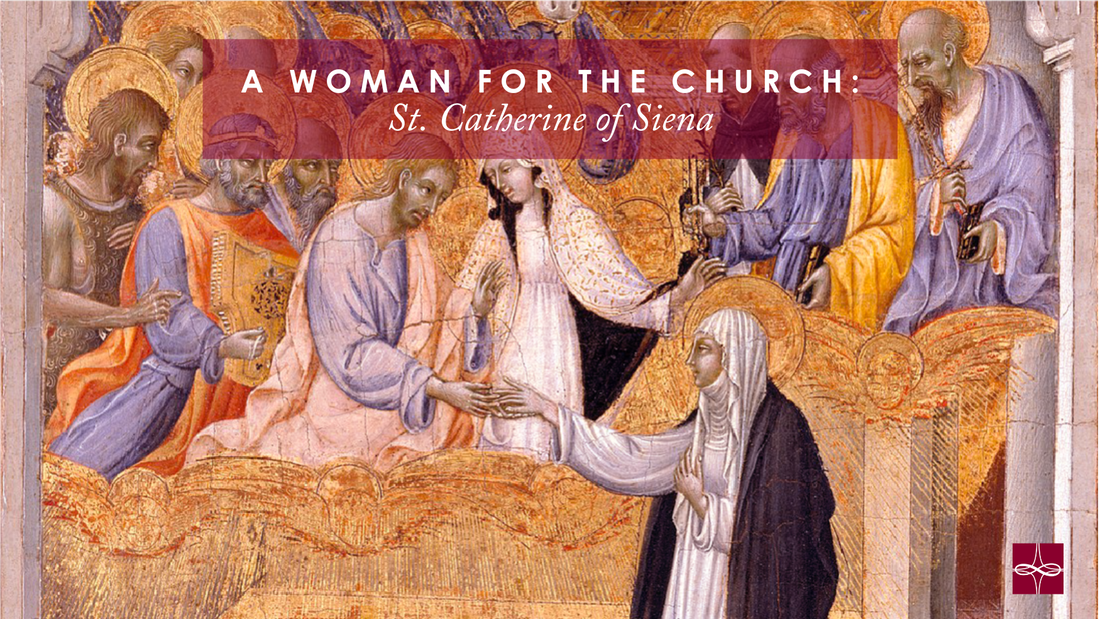





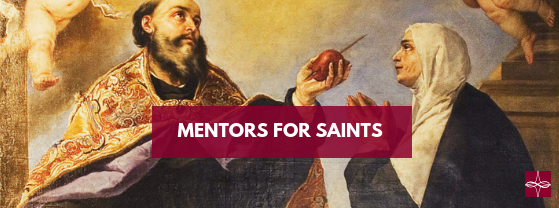



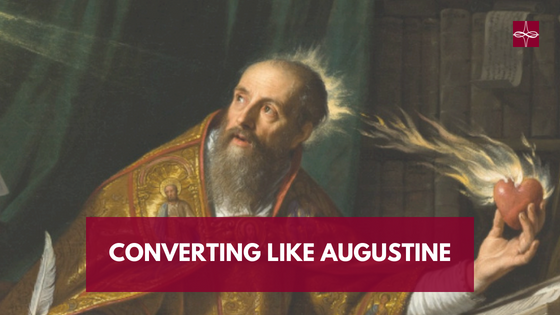

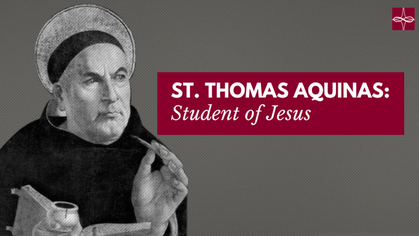
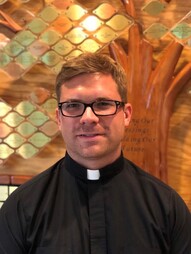


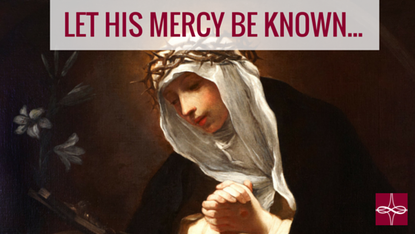







 RSS Feed
RSS Feed